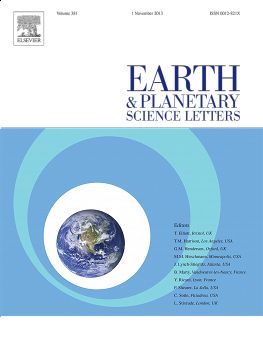West et al., 2019
Climate preconditions the Critical Zone: Elucidating the role of subsurface fractures in the evolution of asymmetric topography
West, N., Kirby, E., Nyblade, A., and Brantley, S.L. (2019)
Earth and Planetary Science Letters, vol 513, p. 197-205
-
Shale Hills, INVESTIGATOR, COLLABORATOR
-
Shale Hills, INVESTIGATOR
-
National, Eel, Luquillo, Shale Hills, INVESTIGATOR, COLLABORATOR
Abstract
Although it has been long understood that rock properties strongly modulate the chemical and physical transformation of rock to regolith, recent studies highlight the central role of mechanical fracturing in the shallow subsurface. Competing hypotheses for how fractures co-evolve with surface processes suggest either that topographic stresses enhance or dampen the potential for fracture propagation, or alternatively suggest that fracture growth depends on the coupling between subsurface hydrology and weathering reactions. Both end-member models produce predictable and systematic spatial patterns of subsurface fracture distributions.
To elucidate the processes responsible for the development of asymmetric hillslope topography and critical zone structure, we combine direct observations of subsurface fracture distributions in boreholes, indirect measures of subsurface rock properties inferred from seismic refraction surveys, and geochemical variations from subsurface samples at a small, shale-underlain catchment in central Pennsylvania. Our results reveal that seismic P-wave velocity profiles are consistent with subsurface fracture densities and zones of chemical depletion observed in boreholes, but that these distributions co-vary with hillslope aspect. Simple models of frost cracking show that, while modern climates are not conducive to subsurface segregation ice growth, asymmetric fracture distributions could have been achieved by subtle differences in aspect-related microclimates driving freeze-thaw during past periglacial climates. The spatial co-variance among fracture density, hillslope gradient, regolith depth, and regolith transport efficiency is consistent with chemo-mechanical damage arising from microclimatic conditions governing the long-term architecture of this watershed. Thus, damage driven by climate could explain the asymmetric topography observed today.
Citation
West, N., Kirby, E., Nyblade, A., and Brantley, S.L. (2019): Climate preconditions the Critical Zone: Elucidating the role of subsurface fractures in the evolution of asymmetric topography. Earth and Planetary Science Letters, vol 513, p. 197-205. DOI: 10.1016/j.epsl.2019.01.039
 This Paper/Book acknowledges NSF CZO grant support.
This Paper/Book acknowledges NSF CZO grant support.
Explore Further




